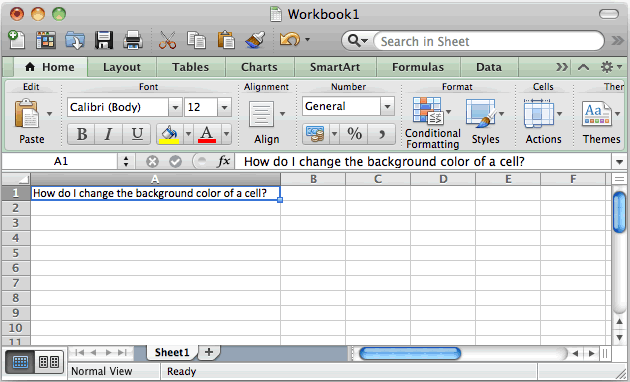

Second approach – format painterĪnother approach that will only copy the conditional formatting rule from one cell to another cell or range of cells is to use the format painter approach. So this approach may not be useful all the time and you may feel it more troublesome to edit the values again.
:max_bytes(150000):strip_icc()/002_how-to-change-worksheet-tab-colors-in-excel-4581361-5c796487c9e77c00011c835c.jpg)
To do this, highlight the cell you want to copy, and hit the Copy button on the Home tab or Control-C, and the go to the target cell and hit the Paste button the Home tab or Control-V.īut this approach will not only copy the conditional formatting rule but also copy the value, which is not required in many cases. One approach is to copy the value from the cell whose formatting you want to copy and paste it to the target cell or range of cells. Copy and paste conditional formatting to another cell First approach – simple copy/paste You can easily copy the conditional formatting rule applied on one cell to other cell or range of cells by using one of the following approaches. This will make the Conditional Formatting button easier to spot.Conditional formatting allows you to copy the format of a cell to another cell or range of cells. Select a Rangeįirst, go to the top of the spreadsheet and disable the Simplified Ribbon feature.
#COPY COLOR EXCEL FOR MAC HOW TO#
In the steps below, we'll outline how to highlight employees that made more than 140 units of sale in 2019. Select the rule (and, if you want, customize the condition).įollow along below for more detailed instructions using our demo sheet. Go to the Home section, and click Conditional Formatting. There are numerous combinations of the formatting condition and styles, but the process is the same every time.

How to Use Conditional Formatting in Excel
#COPY COLOR EXCEL FOR MAC FREE#
Excel Online has a default styling for every condition, but you are free to customize it. You can choose from more than a dozen options, including greater than, less than, between, and so on.įormatting: This is the "then" part of the if/then clause. This might be your entire spreadsheet or just a selection of rows or columns.Ĭondition: This is the "if" part of the if/then clause. Range: You start out by selecting the cells to which the rule will apply. The conditional formatting rule would be something like "If any cell value for the selected cell range is less than 100, change the background color to red." Here's what that would look like:Įvery conditional formatting rule is made up of three parts. Let's say that we want to highlight all unit sales under 100 by changing the cell's background color to red. A rule in Excel Online works as an if this, then that statement. Just as it sounds, Excel's conditional formatting feature lets you dynamically change the format of a cell (the background or the text), based on the rules that you've set. Then log in to your OneDrive account, and you'll be able to manipulate the data from there. Open the spreadsheet in your browser, and select Save to OneDrive. Here, we'll walk through how to use conditional formatting in Excel Online. Simple things like bolding text and splitting up paragraphs goes a long way.īut what about when you're working in a spreadsheet? How can you highlight important or insightful sections of a large data set? How can you add visual flair to certain rows and columns that will not only make the spreadsheet more visually pleasing but also more useful? When you're writing a blog post, an email, or a Slack message, you use formatting to make it more readable.


 0 kommentar(er)
0 kommentar(er)
